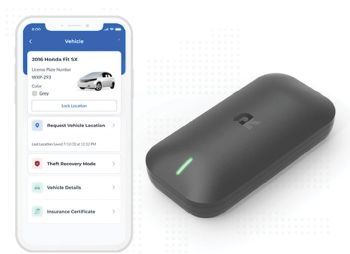Thieves may soon learn it doesn’t pay to mess with a smart car.
Mike Norris • Silicon Labs
More than three million cars are sold in the U.S. annually, and over 700,000 are stolen. Unfortunately for car owners, anti-theft technologies have not kept pace with modern developments, creating a gaping hole in the automotive theft and recovery market.
Conventional anti-theft products have been expensive, complex to install, and difficult to use. They often involve modifications to the vehicle wiring and a time-intensive installation. Moreover, the process of tracking and finding stolen vehicles has generally required specialty tools used exclusively by law enforcement.
There is another challenge facing car dealers responsible for managing hundreds or thousands of vehicles across massive car lots: It’s hard to imagine a more difficult commodity to keep track of than vehicles which, by design, tend to move around. Salespeople must be able to locate specific cars at a moment’s notice. And it’s challenging to sell something if you don’t know where it is.
Vehicle theft prevention and asset tracking are widely recognized problems. Recently, a new approach has emerged for both dilemmas. Kudelski IoT, part of The Kudelski Group, has a long track record of asset protection. Kudelski IoT’s RecovR lot management and theft recovery system brings the IoT to bear on both asset tracking and theft prevention while pulling off the elusive combination of low energy consumption with cellular, BLE and Wi-Fi networking. This approach is both a step forward for theft recovery and promotes sales velocity for dealers – first by making inventory more manageable, but also by being a no-cost, no-risk proposition. Kudelski’s system is easy to install, simple for salespeople to demo to customers, and easy to remove if the customer doesn’t want it.

Wireless asset tracking isn’t much good unless it’s part of a network. The problem is obviously coverage. A stolen car – or one parked on a massive sales lot – is likely to pass through several different indoor and outdoor locations. By leveraging Wi-Fi and BLE in addition to cellular and GPS connectivity, Silicon Labs RS9116 Wi-Fi and Bluetooth transceiver modules allow RecovR to track and locate vehicles in multiple ways: via GPS and cellular for locations with good coverage and line of sight, BLE and Wi-Fi for indoor tracking where Bluetooth beacons or Wi-Fi SSIDs are present.
These chips can run for five years on a single battery. This ultra-low power consumption – atypical among Wi-Fi transceivers – is accomplished by engineering an optimum balance between the device’s listening and standby modes, which are measured at 14 mA and less than 10 µA respectively.
The process or tracking cars with the RecovR system works this way: For each new car arriving at the dealership, a RecovR device is scanned and associated with the car’s VIN number. Then the RecovR is hidden in the car somewhere. The device is about the size of a cell phone, so installation, start to finish, takes less than a minute.
The dealer knows exactly where that car is and can access that information via desktop or mobile web portals. Ditto for the car buyer who can use a simple app to locate their car. If the vehicle is stolen, the owner can share the location data with the police – statistically speaking, the faster a stolen car can be recovered, the less likely it will be damaged.

Because it’s wireless and small, RecovR can be placed anywhere, an important distinction from conventional methods. The fact that RecovR works strictly from a battery provides quite a bit of flexibility. In contrast, there’s only so many places wired systems can be placed in a vehicle and still be hardwired to the car battery, so they become easy targets for thieves to disable. Another secondary benefit to the wireless aspect is that electric vehicles (EVs) have much more sophisticated electronics systems than ICE vehicles. And adding an aftermarket, wired anti-theft measure could invalidate the service agreement.
The Wi-Fi RS9116 is available as an SoC or as a pre-certified, prepackaged module. It was the module version which helped Kudelski IoT speed up its development process. The module’s ability to consistently draw only a small amount of power while remaining connected to a Wi-Fi or Bluetooth network dramatically improves power optimization. Other methods typically need more energy to do the same job. Most devices that rely on Wi-Fi and Bluetooth must be charged frequently, daily in some cases. Some devices can mitigate this by connecting intermittently, but this approach isn’t particularly useful for real-time asset tracking.
Wi-Fi is increasingly becoming accessible for IoT developers thanks to advances in energy efficiency for RF devices. By creating a multiprotocol solution using multiple radios, RecovR can connect to the strongest network available in a given area, ensuring nationwide coverage. Incorporation of multiple protocols makes it possible for RecovR to communicate over large areas while providing precise location data indoors or in other areas where cellular or GPS connectivity is not available.
In a nutshell, Kudelski IoT bucked the long-time status quo of vehicle tracking with wired, costly devices managed by regional police departments. Its wireless tracking battery powered device entails little upfront cost for car dealers and brings immediate value for consumers. Low-power Wi-Fi and Bluetooth are here to stay in the automotive sector, and it’s likely we’ll see additional innovative deployments in other markets.





Leave a Reply